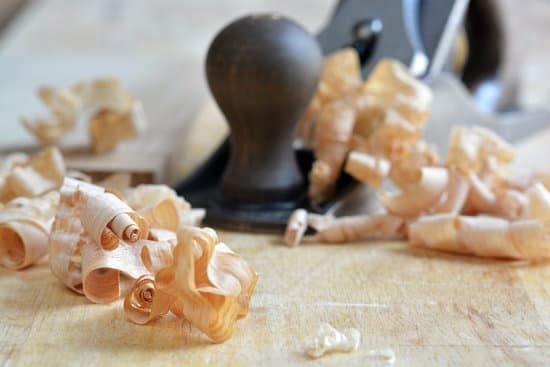Introduction
Hand plane woodworking is a type of woodworking that utilizes hand planes for the purpose of smoothing out or molding surfaces. When used correctly, a hand plane can help create surfaces with an even, consistent texture. This can be beneficial in both finishing and joinery operations as it allows for precise, smooth finishes. The main benefit to using a hand plane is that it provides superior accuracy compared to other woodworking methods like sanding and routing, making them perfect for intricate details and highly detailed designs.
In addition to its precision capabilities, hand planes also provide portability – they are more lightweight than heavier power tools and easier to transport. This makes them ideal for on-site work such as fine cabinetry work or repairs. Finally, using a hand plane requires minimal setup which helps to keep your workspace clean and efficient – all you need to do is affix the blade or chisel appropriately and it’s ready to go.
With proper maintenance and care, a well-made hand plane can last you for years or even decades – making them great investments for any serious woodworker who wants reliable performance for their projects. Hand plane woodworking is one of the oldest formats of working with wood but still useful today due its versatility and accuracy. From finely detailing furniture pieces to creating beautiful decorative elements in cabinetry work, hand planes are invaluable tools in any serious craftsman’s toolbox.
Preparing for Projects
Before using a hand plane for any woodworking project, you must first determine what type of material is being used and select the best tool accordingly. The most common types of materials that can be planed include hardwoods, softwoods, and MDF (medium-density fiberboard). To get started, choose the appropriate plane based on the material. For instance, a block plane is preferred for fine details while a jack plane is better suited for larger areas.
Once you have selected your plane, it’s time to prepare your work surface and gather all required items needed for the project. First off, make sure your workspace has adequate lighting and plenty of room to maneuver around the piece. Additionally, a sharp pencil or marker will come in handy when outlining patterns or measuring cuts. For convenience sake, ensure that an assortment of back saws, chisels and other small cutting tools are easily within reach before beginning any serious work with the hand plane.
Finally, it’s important to pay attention to safety when using a hand plane since it can be dangerous if misused. In order to minimize risks, always wear protective eyewear when working with power tools and wear gloves to avoid any knicks or splinters from occurring during use. Additionally, perform regular maintenance on your hand plane such as oiling and cleaning the blade with sandpaper in order to maintain its effectiveness and edge retention capability throughout continued use. With these preparatory steps accomplished before getting started, you’ll be ready to tackle any woodworking project successfully!
Preparing the Workpiece
Before using a hand plane, it is important to prepare any workpiece accordingly. The most common way to prepare the workpiece is to trim excess material off the end and sides with a saw or chisels. This will help ensure that you have a clean surface with which to begin planing wood. Depending upon your project, other shaping may need to be done as well. For example, if you are creating a complex shape, you will likely have to use saws or chisels to create grooves or patterns into your workpiece before commencing with planing. Furthermore, it is important that all edges of the workpiece are given the same amount of attention with trimming and cutting – uniformity helps ensure that your finished product looks its best. Once all of this prep work has been completed and checked for accuracy, you can move on to using the hand plane itself.
Essential Techniques for Hand Plane Woodworking
Planing:
The most common technique used when hand plane woodworking is planing. In order to use this technique, you will need to set the blade of your plane to just below the surface of the wood that you want to plane. Once you have done this, use long sweeping motions to send the blade over the top of the surface. Make sure that your motion is even and steady, as it helps ensure a quality finish. This can be done with either coarse or fine blades depending on how much material needs to be removed.
Scraping:
Smaller areas or difficult grain patterns are likely best dealt with by scraping versus planing. To do this, adjust your tool’s blade so that it is slightly higher than normal, and then push it lightly across small sections at a time. The idea is for very fine shavings to come off each time you go over an area – making it easier to get rid of any inconsistencies on the surface. Correctly set planes should not create deep gouges in your wood if scraped correctly in this fashion.
Smoothing:
After planing and scraping, you’ll likely need some smoothing work done afterward. This requires some special skill with an abrasive paper called “sanding paper”. With sandpaper, start off by taking a heavier grit (around 120-150) and gradually reduce down until desired finish is achieved (usually around 400-grit). Always ensure that you’re using really light pressure on these sandpapers else they can become too aggressive and ruin whatever look/feel work has been attempted up until now. Using sandpaper also eliminates any risk of burning/scarring along ridges in hardwood – something that can happen with rougher blades when using other techniques like planing or scraping.
Safe and Efficient Use of Hand Planes
Hand planes are a great tool for woodworking and come in a variety of sizes and styles, each designed for different purposes. When using a hand plane, you must use extreme caution to ensure safe operation. Follow these simple steps and instructions to get the most out of your woodworking projects with hand planes:
1) Be sure to select the right plane for the job. A smaller plane works best when working on delicate surfaces like veneers while larger smoother planes are ideal for more sturdy surfaces like hardwoods.
2) Start by sharpening the blade of the plane. You can use a sharpening stone or other abrasive mediums like diamond plates or water stones to keep it razor sharp.
3) Position yourself properly before you begin working with the hand plane. Stand square and upright, keeping your balance as steady as possible during cutting motions.
4) Align the blade angle just slightly lower than 90 degrees with respect to the work surface. Make sure that you’re holding onto both handles when striking down knife marks or smoothing large surfaces so that you’ve got total control over motions at all times.
5)Move in one direction only while cutting down your pieces – this will create a consistent result along with accuracy in cuts and lines.
6)Watch out for any debris that has been removed from wood by the blade; this could potentially injure those around if it ends up flying through air upon removal from tooling significantly away from target surface.
7)Finally, after completing your project make sure to properly clean up and store your tools away safely! Proper packing is essential in order to avoid damage that can occur due corrosion or foreign objects entering into contact with them when not in use or stored improperly–thus damaging blades irreversibly over time.
Different Types of Hand Planes and Their Uses
There are many different types of hand planes used in woodworking. Each type of hand plane has its own uses, advantages, and disadvantages which make them better suited to certain tasks. Below are some of the most popular hand planes and the various purposes they serve:
Block Plane – A block plane is a small, lightweight tool with a curved base that makes it ideal for reaching into tight spaces such as beveling edges or smoothing narrow surfaces. It can also be used for edge-trimming or chamfering glued boards.
Jack Plane – The jack plane is designed for use on larger workpieces such as dresser drawers and cabinet doors. Its large size and weight give it the power to quickly level out rough surfaces or remove stock quicker than other planes.
Jointer Plane – The jointer plane is long and straight-edged, which makes it perfect for joint making and steeling long pieces of wood. The blade can be set to create perfectly straight edges without any bumps or ridges.
Smoothing Plane – The smoothing plane is slightly longer than other models and features a thinner blade that produces a finer finish on the workpiece’s surface. It’s great for removing mill marks, corrugations and other slight imperfections from a piece before finishing it off with varnish or lacquer.
Rabbet Plane – The rabbet plane is specifically designed to cut rabbets (or dados) along edges in order to create secure joints between pieces of wood; making them ideal for frame and cabinetmaking projects. They come with adjustable fences so you have complete control over your cuts every time you use it.
Each type of hand plane has its place in your workshop, each offering its own unique advantages when tackling specific tasks around the shop. Knowing which one is best suited for each job will help ensure you get the results you need in less time and effort!
Finishing Tips to Achieve a Professional Hand Plane Woodworking Job
If you are interested in achieving a professional hand plane woodworking job, it is important to remember the right finishing tips. To start with, always ensure that you sharpen the blade of your hand plane before use. This will ensure that the cutting edge stays sharp and produces a good quality finish.
Once the blade is sharp, it’s time to actually begin working on the wood. To achieve a smooth finish with a hand plane, you need to master two techniques known as “slicing” and “overlapping.” To slice, use long strokes with your hand plane parallel with the grain of the wood to remove as much material as possible without damaging the surface of the wood. For overlapping, use short slicing motions to gradually flatten uneven surfaces. As you continue working on these techniques, try to increase speed while maintaining control over your tool — this will help produce consistent results.
Once you feel comfortable with slicing and overlapping techniques, apply some finer finishing tips such as carpenter’s paraffin wax or protective sealer on the wood surface. You can also make use of different grades of sandpaper for smoother results. Finally, finish off by polishing and buffing up any surfaces in need of extra attention for that perfect finish. With patience and practice you can also learn other hand plane refinements like how best to avoid revealing tear-out or making angled cuts in your work pieces — all needed skills for successful professional grade wooden pieces!
Conclusion
Creating beautiful hand plane woodworking pieces is easier than it looks. Start by selecting the best type of hand plane for your project. Consider what task the plane is going to achieve and the size of the piece you are working with. Once you have selected the correct type of hand plane, set up an area where you can safely use it and begin shaping your piece. It is important to use light strokes when operating a hand plane and always make sure that you follow any manufacturers’ instructions for safety and proper use. Use a ruler or straight edge in conjunction with the hand planer to ensure everything is straight and level before beginning to smooth out rough edges or remove excess material. Finally, once all desired changes have been made, sharpen or replace the blades as necessary and enjoy your finished piece! With practice, creating beautiful pieces with a hand plane can become enjoyable and rewarding work.

Hi everyone! I’m a woodworker and blogger, and this is my woodworking blog. In my blog, I share tips and tricks for woodworkers of all skill levels, as well as project ideas that you can try yourself.





